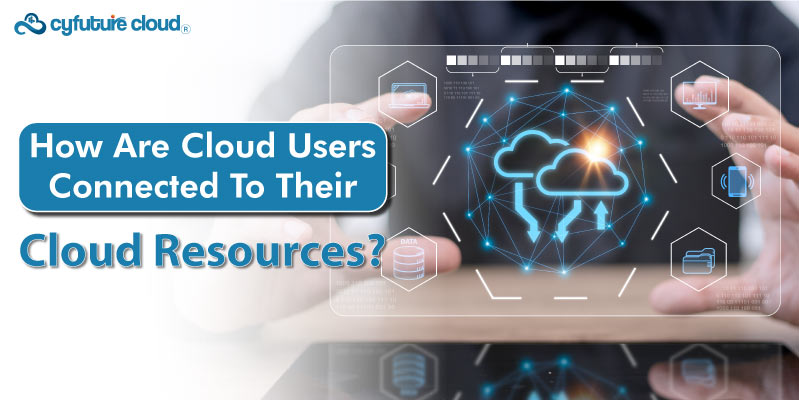 Server
Colocation
Server
Colocation
 CDN
Network
CDN
Network
 Linux Cloud
Hosting
Linux Cloud
Hosting
 VMware Public
Cloud
VMware Public
Cloud
 Multi-Cloud
Hosting
Multi-Cloud
Hosting
 Cloud
Server Hosting
Cloud
Server Hosting
 Kubernetes
Kubernetes
 API Gateway
API Gateway


In the current scenario, a maximum number of people rely on cloud computing for accomplish the needs of both personal and business.
Cloud computing allows anyone to access data, apps, and computer resources from anywhere, no matter which part of the globe. Cloud computing is very efficient and helpful for both personal and professional purposes as it offers on-demand access to a shared pool of reconfigurable computer resources, including networks, servers, storage, and apps.
However, how precisely can cloud users access and connect to their cloud resources? To put it succinctly, the connection is established utilising a range of tools, protocols, and techniques across the internet or public or private networks. Let's examine the cloud connectivity conundrum more closely as there are several components that need to work together in order for this link to be possible.
The first and most obvious element is internet access through your own devices, including laptops, smartphones, tablets, etc. As long as your device is online, you can often access your cloud resources via a web browser or a mobile app. Businesses will have employees connect from corporate devices, networks, and VPNs too.
From any internet-connected device that can access the cloud provider's site, consumers may access their resources. This covers a broad variety of gadgets, including:
Tablets and Smartphones running on Android or iOS
Laptops and desktops with Linux, Windows, MacOS
IoT devices like smart home hubs
Through a web browser or app, users may access their cloud accounts as long as the device is connected to the internet. Data communication to cloud services is supported by all major platforms and operating systems. This provides users with flexibility to access their data, applications and infrastructure from anywhere with an internet signal.
The fundamental web and internet protocols that provide connection between your device and the cloud provider's servers are the next to be discussed. The most widely used protocol is HTTPS, which enables safe login and data access over an encrypted connection. You may also use older protocols like HTTP, FTP, SSH, or others depending on the application.
In more technical detail, devices connect to the cloud service provider's systems using internet protocols. The most common protocol which is used for regular unencrypted web traffic is HTTP (Hypertext Transfer Protocol), or the one which securely encrypted web traffic is HTTPS (HTTP Secure). There are few additional protocols also available for file transfers, like FTPS (FTP Secure) and FTP (File Transfer Protocol).
Ports and network security rules configured on the cloud provider's systems control which devices and networks can access cloud resources. For example, you may open up SSH port 22 access so IT staff can remotely administer Linux servers, or open up Remote Desktop ports so your Windows admins can manage Windows VMs.
From the client side, devices connect
Of course, once connected the cloud service needs to authenticate and authorize you to access the appropriate resources. This is done through secure login methods like usernames/passwords, multi-factor authentication, SAML, OAuth, etc. The cloud provider maintains strict controls over which users and devices are allowed access.
IT teams can remotely access cloud infrastructure like virtual machines through protocols like SSH, RDP, etc. This is done by opening up the corresponding network ports and IPs on the cloud environment, so only authorized admins can connect. The same concepts apply for users remotely accessing virtual desktops as well.
In summary, multiple technical components come together to enable user connectivity and access to cloud resources:
Cloud users connect from a wide variety of internet-connected devices including:
Laptops and desktops running operating systems like Windows, MacOS, Linux
Smartphones and tablets with iOS or Android
IoT devices, Smart TVs, and other web-enabled hardware
Corporate workstations and devices on internal networks
Communication between the user's device and the cloud provider happens over the internet using standard networking protocols such as:
HTTPS (HTTP Secure) - The primary web protocol used to access cloud services over an encrypted connection
HTTP - Standard unencrypted web protocol
FTP/FTPS - File transfer protocols
SSH - Secure Shell remote administration protocol
RDP - Remote Desktop Protocol for remote Windows access
Cloud providers utilize strong authentication methods to validate a user's identity before granting access, including:
Username and password logins
Multi-factor authentication (MFA) with one-time passwords, push notifications, etc.
SAML single sign-on integrations with identity providers
OAuth tokens for application access
X.509 digital certificates
IT admins configure network access rules on the cloud environment:
Open specific ports like 22 for SSH, 3389 for RDP, 443 for HTTPS
Restrict access by source IP range or VPN
Setup security groups and network ACLs to filter traffic
Enable health checks to ensure uptime
This Cloud Connectivity Stack covers the key technical elements enabling users to connect to their cloud resources in a secure and authenticated manner. Cloud providers seamlessly manage all the underlying infrastructure to make accessing cloud apps, data, and services a simple process for end users.
Cloud providers put all these elements together behind the scenes. They create a seamless experience where authorized users can instantly access their cloud-based resources regardless of location or device. And that is the magic of cloud connectivity!

Let’s talk about the future, and make it happen!
By continuing to use and navigate this website, you are agreeing to the use of cookies.
Find out more


